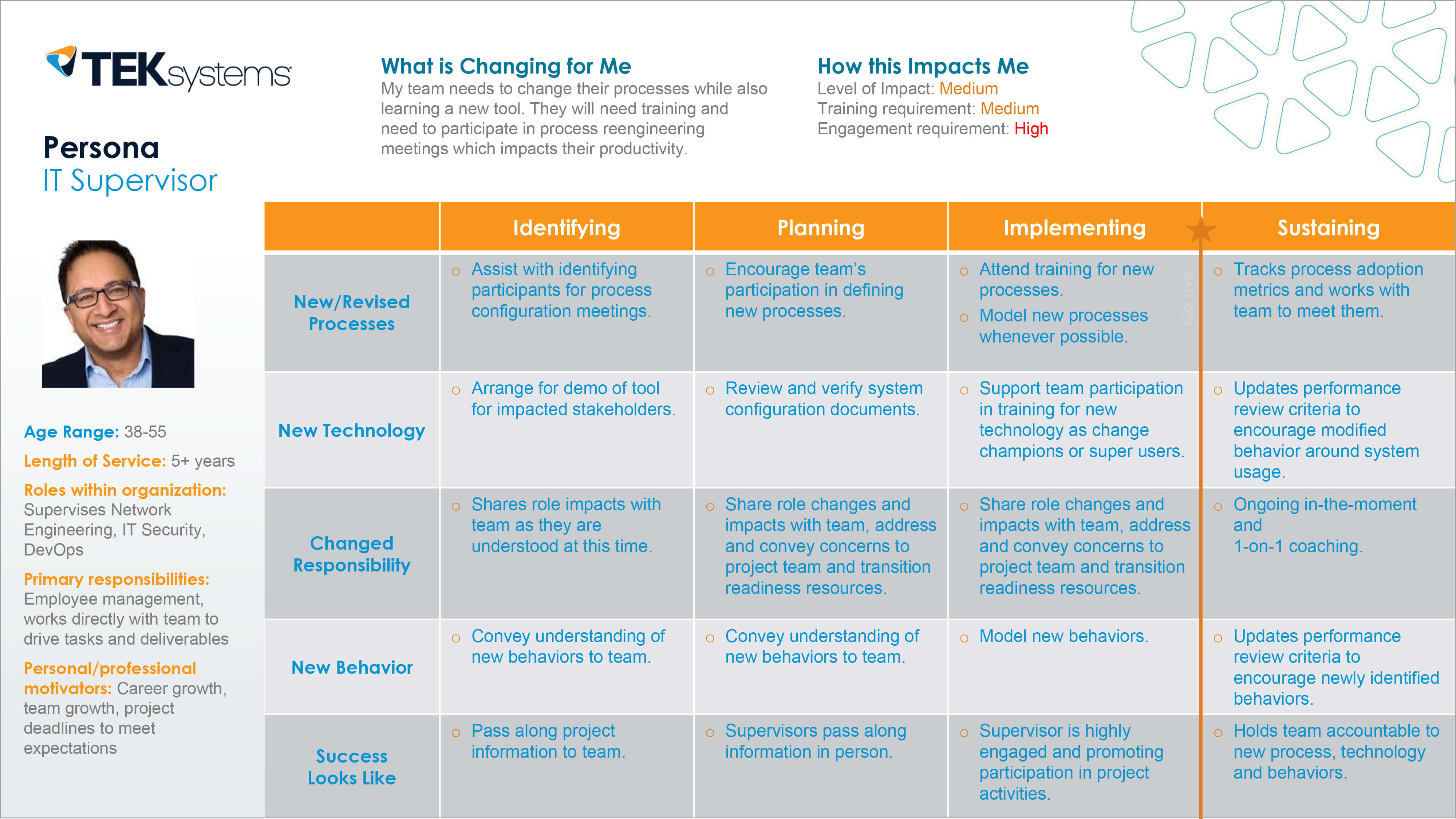Driven by Change
Rethinking Stakeholder Change Management Using Customer Journeys
November 2, 2018 | By Lanette Ferguson

In managing organizational change (OCM), core practices are traditionally used to assess a project’s impact on stakeholders. However, what’s often overlooked is how stakeholders actually experience the change. This is where the concept of the stakeholder journey becomes invaluable.
Borrowing from design thinking—a human-centered, prototype-driven approach to innovation—the idea of mapping a customer journey helps organizations uncover deep behavioral insights.
This same approach can be adapted for change management, where mapping the stakeholder journey helps us understand how individuals and groups navigate change initiatives.
By applying journey mapping to the OCM strategy, we can better grasp the unique ways stakeholders interact with change efforts. Just as customer journeys reveal the emotional and practical touchpoints of a buyer, stakeholder journeys reveal the challenges, motivations and opportunities that impact adoption and engagement.
Using Personas in Change Management
Using stakeholder change journeys along with personas helps us humanize and deeply understand the most impacted stakeholders. The process of developing stakeholder journeys and personas requires stepping into the world of the impacted stakeholder using empathy to gain perspective of their journey.
When personas are thoughtfully crafted and paired with a mapped stakeholder journey, every part of the OCM strategy becomes more effective. These tools enable change leaders to:
- Reduce resistance
- Improve communication
- Tailor support to each stakeholder group
- Drive meaningful engagement
By sharing these stakeholder journeys with sponsors, leaders and project teams, organizations can foster a more unified, human-centered view of the change process.
Leaders gain empathy and a full understanding of how transformation affects their teams, making change efforts more relatable and actionable.

The beginning of a stakeholder journey. Developing journeys and personas help to gain perspective when managing change.
Unwrapping Results
Integrating design thinking, stakeholder journey mapping and personas in change management into your OCM strategy delivers measurable value when managing organizational change. The insights gained from this approach include:
- Providing an opportunity for change and allowing project teams to thoroughly think through the change from an impacted stakeholder perspective
- Creating deep awareness of how each stakeholder group experiences the change journey
- Providing input into the change adoption, change readiness, coaching, change network, communications, training, resistance management and sustainment plans
- Enabling buy-in from project and leadership teams in support of recommended change activities
- Providing the project team and leadership with an easy way to understand which stakeholder groups are affected the most and at the highest risk
- Enabling the change management team to devise powerful stakeholder management approaches
Mapping the Stakeholder Journey for Change Success
Storytelling and visualization are critical components of successful OCM strategy implementation. When you combine journey mapping with personas in change management, it enables organizations to:
- Align siloed teams and business units around a shared vision
- Identify and remove friction points within the stakeholder journey
- Accelerate the change life cycle through proactive resistance management
- Increase end-user adoption and long-term sustainment
- Establish key metrics to measure alignment, commitment and change agility
- Lay the cultural foundation for change resilience and ongoing service improvement
By visualizing the complete stakeholder journey, organizations can build trust, foster clarity and deliver change in a way that resonates with real people, not just systems and processes.
Ready To Improve How You’re Managing Organizational Change?
The integration of stakeholder journeys and personas in change management is not just a best practice—it’s a transformative approach to managing organizational change.
Embedding these tools into your OCM strategy builds empathy, encourages leadership alignment and drives measurable results.
Looking to make your next change initiative a success? Let’s connect.